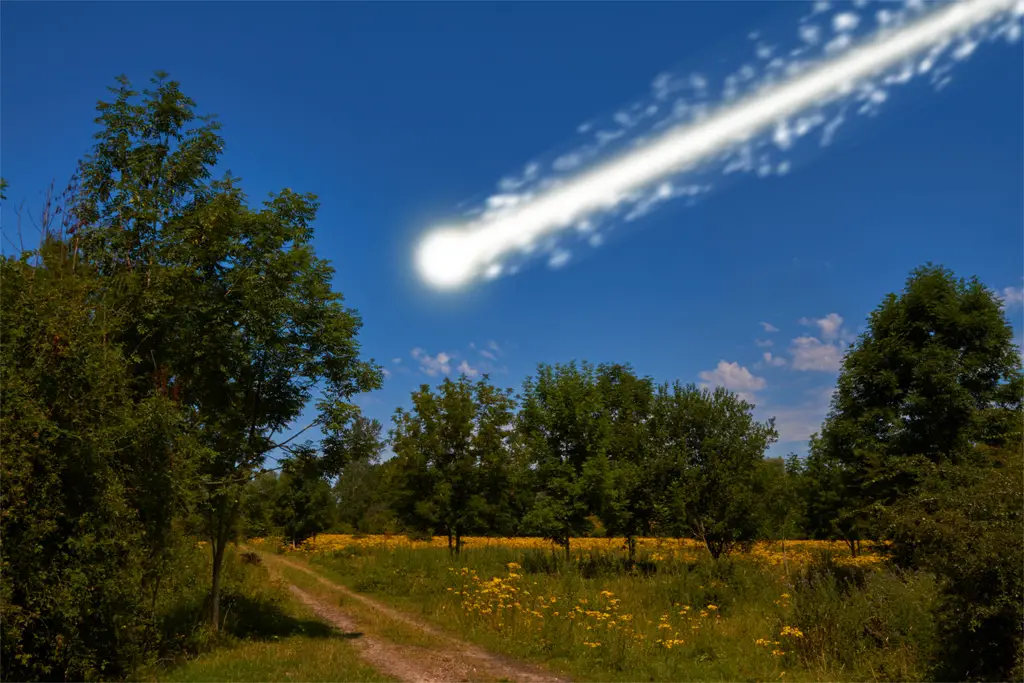On June 30, 1908, just after seven in the morning, an explosion took place near the Stony Tunguska River in Central Russia that became the largest impact with Earth in recorded history. The mysterious explosion became known as the Tunguska Event.
The explosion is believed to have been caused by a meteor, although no impact crater was ever found. It’s thought that the meteor exploded three to six miles (4.8 to 9.6 km) up in the air. Even without an impact crater, the devastation to the land was immense. About 800 square miles (1,287 sq km) of forest were flattened, which included 80 million trees. The force was so great that the trees were blown in a radial pattern on the ground, and their bark and limbs had been torn away.
An expedition to the area didn’t occur until 1921, but the harsh Siberian conditions didn’t allow the team to reach the blast site. It wasn’t until 1927, 19 years after the blast, that an expedition made it to ground zero of the blast site. They discovered something remarkable. While the trees were pointing away from the epicenter of the blast in a circular fashion, the trees at the epicenter were still standing upright. Amazingly, there was no evidence that anyone died in the explosion.
The most widely held theory on the cause of the Tunguska Event is that a blast occurred because an asteroid that was about 120 feet (37 meters) across entered Earth’s atmosphere at about 33,500 miles per hour (53,913 km per hour). It heated the air around it to 44,500 degrees Fahrenheit (24,704 degrees Celsius), and due to the enormous pressure and heat it generated, it’s believed it split apart and detonated at around 28,000 feet (8,534 meters).
The energy released from the explosion was estimated to be between 3–5 megatons of TNT or proportional to 185 Hiroshima atomic bombs. The shock wave would have been enough to register 5.0 on the Richter scale. Meteorological stations in Europe even recorded seismic and atmospheric waves from the explosion. There were also natural phenomenons observed thousands of miles away. In Europe and Asia, the sky was lit at night for a few days following the explosion, clouds glowed, and the sky turned yellow.
The lack of any type of crater at the site produced various theories on how that could have happened. The theory that a space rock exploded in mid-air was bolstered by the fact that the expedition in 1927 did find small pits they interpreted as small craters that had been formed by fragments of the rock hitting the ground. An alternate theory was that a comet struck the area, and since comets are composed of ice, it would have vaporized and left no trace behind, but the evidence for this hasn’t been found
There have been other interesting theories on the lack of rock on the ground and the absence of an impact crater. One theory was posed that it was a nuclear explosion caused by extraterrestrials of some unknown origin, another theory proposed that a small black hole had collided with Earth, and yet another said the event was caused by an underground eruption that released hot gases that exploded in the atmosphere.
There still hasn’t been any definitive evidence that explains the explosion, but the theory of a meteorite exploding in mid-air continues to be the most widely held belief. Until further proof comes to light, the Tunguska Event will continue to remain a mystery.



